My collection boasts more than 90 clocks, with 51 on display throughout my home, 6 at our summer cottage, and 19 running non-stop. The majority of my 90 clocks are operational, although I periodically switch out some of them to maintain the 19 that run continuously.
One clock remains in its place in an upper hallway. One might assume that the clock is the priciest, rarest, most intricately designed, or possesses highly unique features. However, it’s quite the opposite—it is very plain, unremarkable in appearance, and a clock that some would consider unworthy of repair. Opinions may differ but I leave it up to you, the reader.
It is a circa 1895 Ansonia Extra Drop wall clock made by the Ansonia Brass and Copper Co. but is missing two essential features, the brass bezel for the clock dial and the lower access door (more on the door later). Otherwise, the clock came with most of its parts.
This clock has seemingly journeyed through life with its smile turned upside down. It’s a genuine barn discovery, and one can only speculate about the years it had spent scattered in pieces gathering dust and rust without knowing that it would be resurrected one day.

After bringing the clock home, I found myself considering its future. At first, I debated whether to salvage the movement, the veneer, the finials, or the frame, or simply discard the clock altogether since its cost was negligible.
Then it dawned on me that despite missing some components, the clock could be revived. The idea of the clock languishing unused and neglected evoked feelings of sympathy, which I admit is a strange feeling for an inanimate object. In our throw-away world today perhaps the value in reviving and cherishing something that had been forgotten or overlooked, restoring its purpose and significance, led me to appreciate it even more.
Eight years ago, I was enthusiastic and eager to acquire clocks to work on them, and given my beginner status in movement servicing and case repair, I entertained the idea of using it as a learning platform for restoration. Repairing a broken clock always provides a valuable learning experience, allowing one to develop new skills in mechanics, craftsmanship, and problem-solving, which can be applied to future projects.
Let’s go through the steps I followed for this project.
The Movement
The time-only movement was encrusted with rust, presenting a significant challenge to restore it to working order. I spent considerable time scrubbing, cleaning, and meticulously sanding away the rust from the pivots and other steel parts.
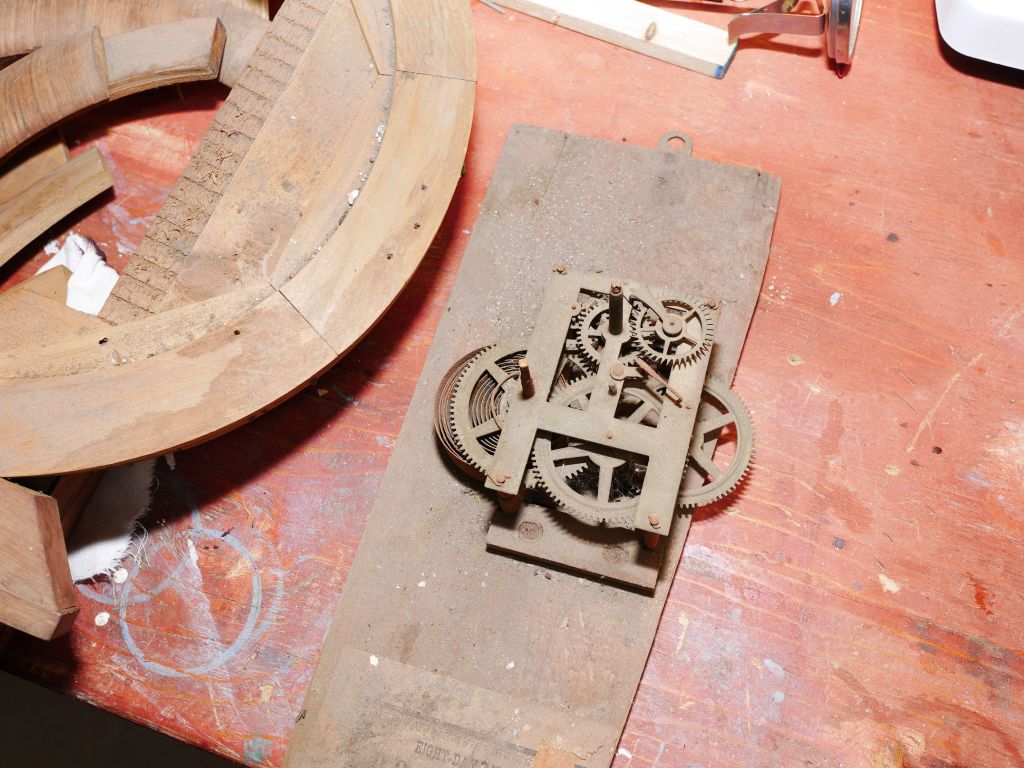
While I initially considered replacing a severely rusted mainspring, upon closer inspection, I realized that much of the rust was superficial, leading me to reconsider the need for replacement.
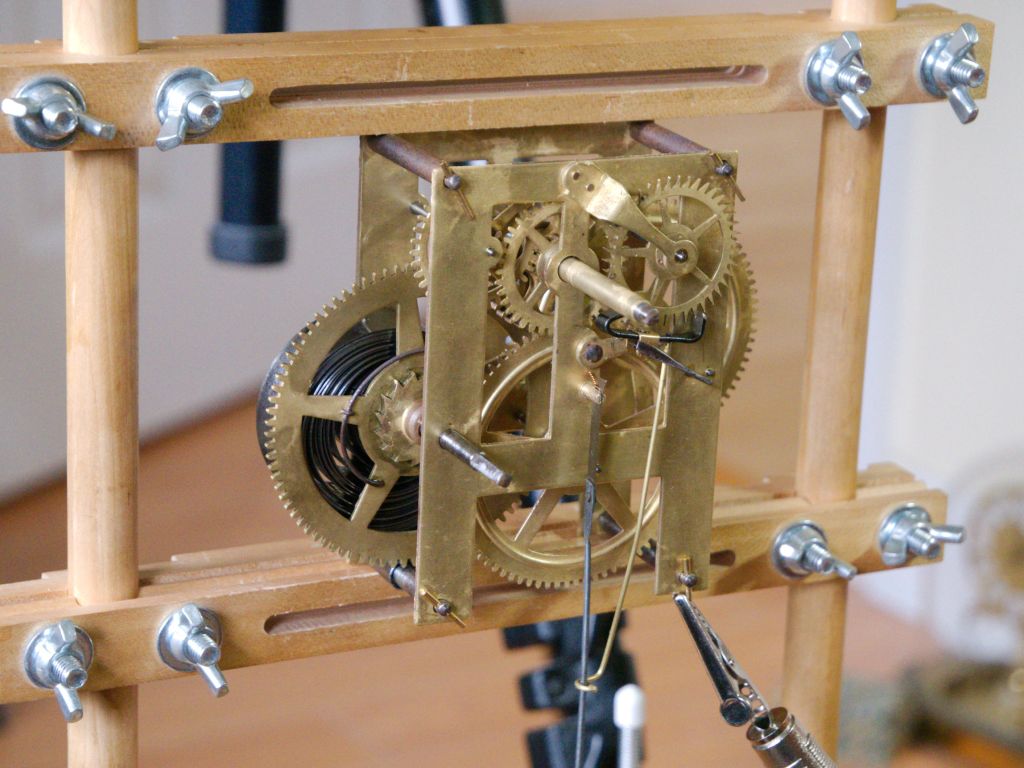
Eventually, my efforts paid off, and I succeeded in getting the movement to run smoothly once again.
The case
Next, attention turned to the case. While a significant portion of the original label remained intact on the backboard, a section had broken off and was lost forever.
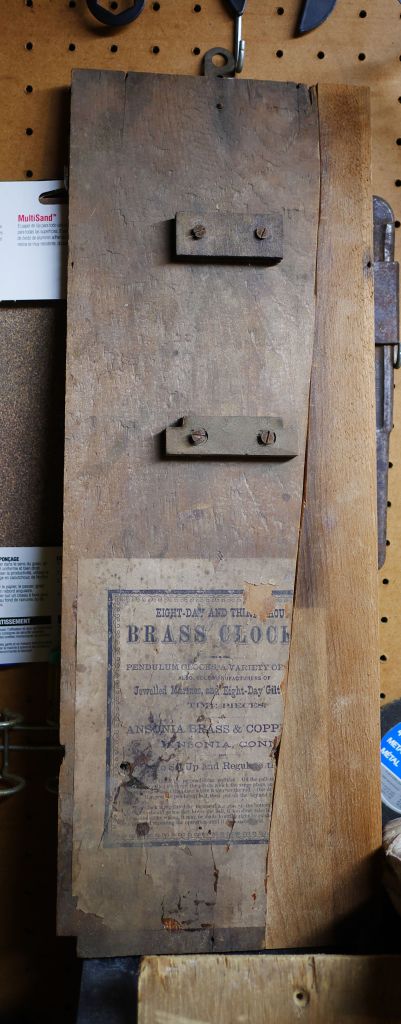
To remedy this, I found a suitable backboard piece from an old ogee clock cut a piece to fit, and glued it in place. The backboard is attached to the clock case in the photo below.
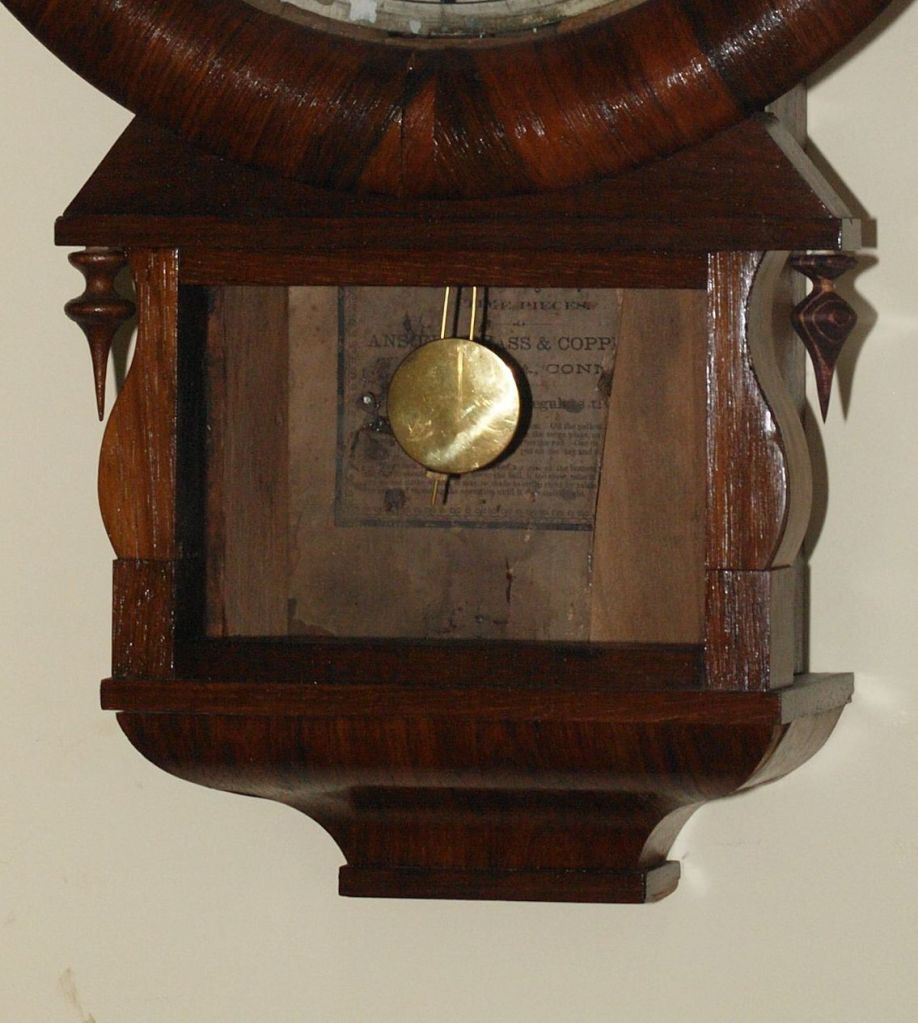
The case was also missing its access door, and rather than leaving the clock without one, I built a door frame using pieces of softwood. I then applied salvaged veneer from another project, gluing it onto the frame. Shaping old veneer over doweling is a challenging task, but I did my utmost to accomplish it as well as I could.
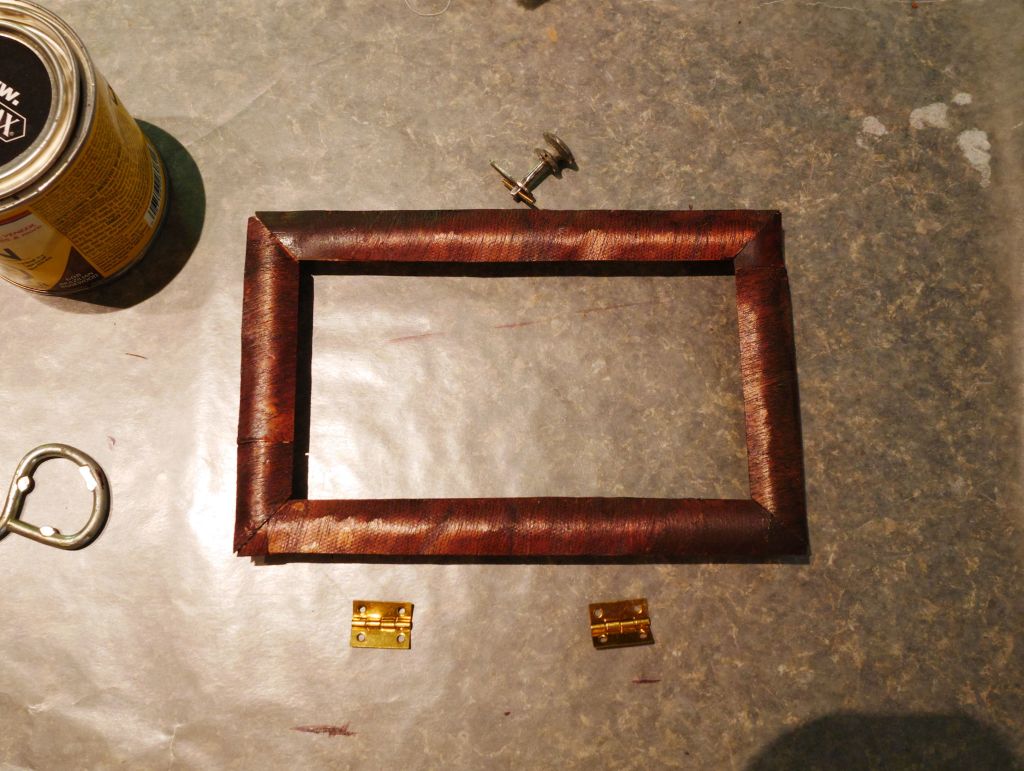
The rest of the case repair involved bringing the pieces together with glue and then applying traditional shellac to enhance the intricate, fine-grained characteristics of the rosewood veneer. To complete the project the dial required some paint touchups and suitable hands were sourced from a clock parts supplier.
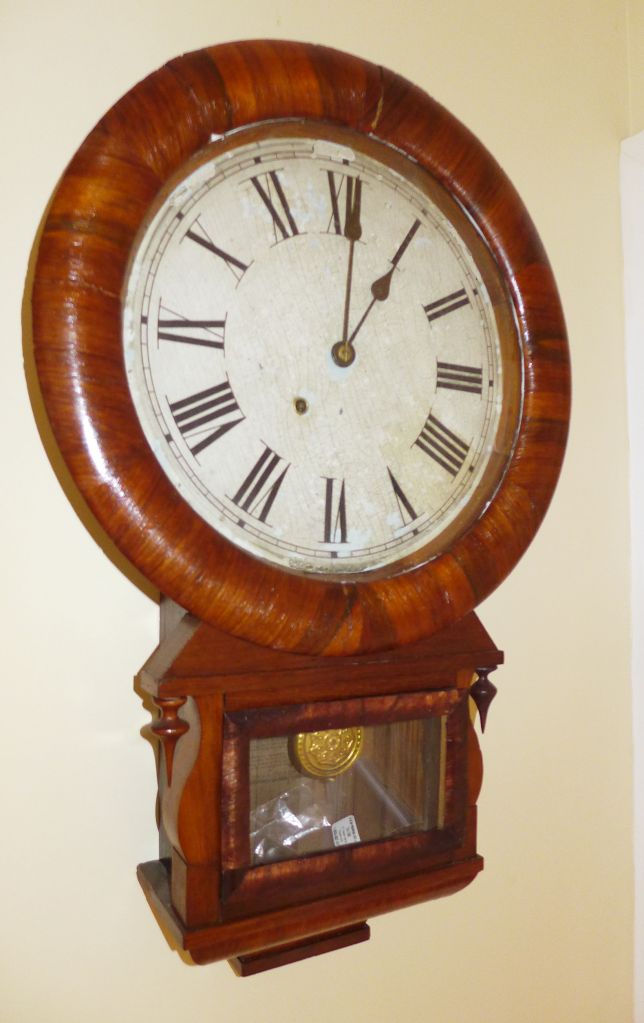
While not the most aesthetically pleasing clock by any measure, it symbolizes the trials of restoring a seemingly hopeless clock, transforming it into a functional piece that serves its purpose reliably every day.
However, its greatest achievement lies in offering me a valuable learning platform that I can apply to future projects. Every time I pass by the clock It reminds me not only of the work I put into the clock but moreover, that not all is lost and that certain things are indeed worth preserving.

Lovely piece Ron – both the article and the clock. You illustrate so well the human connection that you have with the clock as a result of having nurtured it back from what looked like a hopeless situation, and rejuvenated it, returning it to its intended function.
One of my favourite clocks, similarly, is an unremarkable two train Smiths mantel clock, but it is the first one I ever dismantled, cleaned, rebushed and returned to working order, during a one week residential course at the British Horological Institute. That sense of pride at the achievement floods back to me every time I pass it in the hallway.
Here in the UK, a TV programme called The Repair Shop sees experts take items which may be of no financial value to their owners but are of immense sentimental value, and restore them. It proved a heart-warming diversion during the tough covid years where we were all forced to decide what really was of value to us.
As always, thanks for posting such interesting material.
Hugh
LikeLike
Thanks Hugh.
LikeLike
I’d bet your clock feels grateful.☺ Great story. Thanks.
Would you explain the term ‘Extra Drop’?
LikeLike
A “drop” is the section of the clock case under the dial that usually has a window through which the pendulum can be observed. Interestingly “Extra drop” is the actual name of the clock.
LikeLike
Likely more than a few of us have “sympathy cases” that are seemingly not worth spending time and money on. But we do it anyway. Mine is an old Ingraham which spent some years in a leaky shed.
Great article.
LikeLike
I think we do it because it is one step closer to enhancing our skillset, we enjoy problem-solving and we genuinely enjoy bringing old clocks back to life.
LikeLike